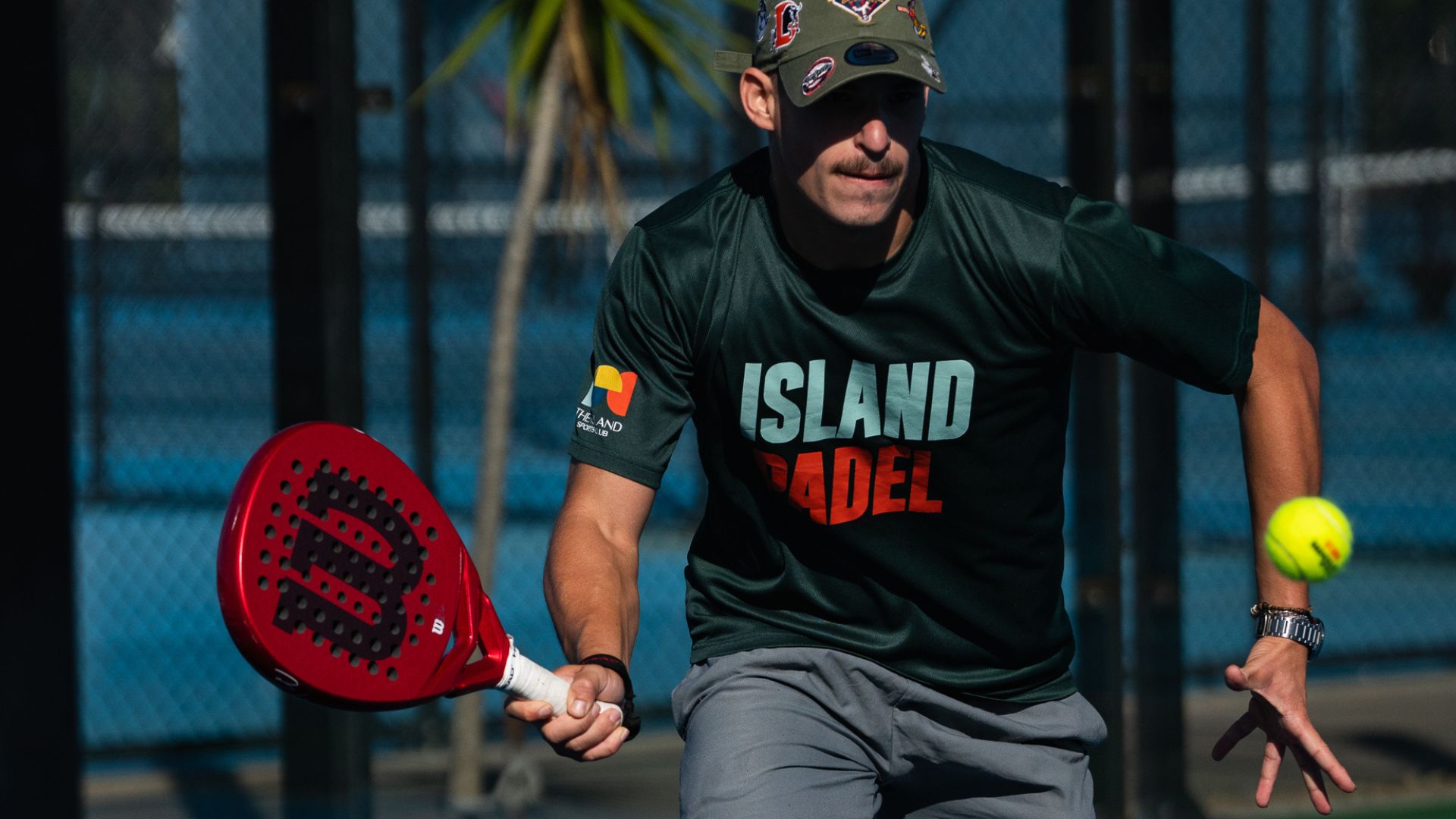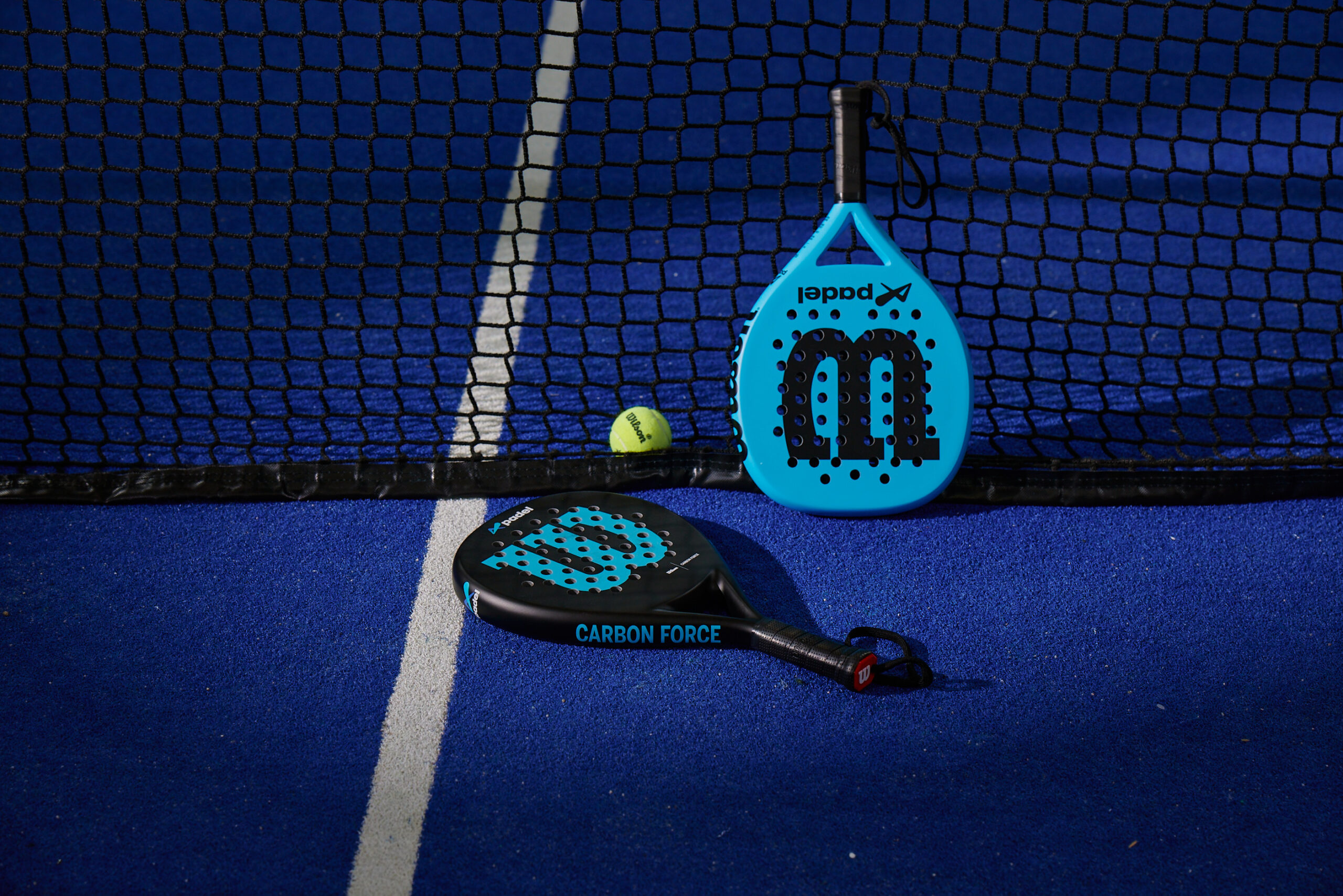WHAT IS PADEL?
Padel was invented in 1969 in Mexico by Enrique Corcuera who didn’t have space for a tennis court, so he built a smaller court and erected walls around it to avoid losing the ball. From its beginnings, the sport spread rapidly to Spain and Argentina, becoming a global phenomenon played in over 90 countries today.
Padel is taking the world by storm—and it’s no surprise why. This sport is energetic, fast-paced, and a whole lot of fun, perfect for those seeking a different kind of challenge. A blend of tennis, squash, and badminton, padel is always played in doubles on an enclosed court where you can use the walls as your secret weapon.
Whether you’re just dipping your toes into the game or ready to up the ante with some serious competition, padel serves up something for everyone, no matter your age or skill level. It’s easy to pick up, irresistibly social, and an addictive way to stay in shape.
HOW TO PLAY
Padel is easy to pick up, addictive to play, and perfect for all ages and abilities. The walls are all part of the fun, keeping the ball in play for longer and adding a new dimension of strategy to the game. Padel is always played in pairs, encouraging teamwork and always keeping it social.
Serving – Serve underhand into the diagonal box on the opposite side. You have two attempts! If your serve bounces and hits the cage first, this is out. If it hits the back wall, the point is live.
Using the walls – The ball can only bounce on your turf once. Once it does, it can bounce off any glass wall on your side, before or after you hit it! Your return must touch your opponent’s turf before the wall.
You score a point when… The ball bounces twice on your opponent’s turf, your opponent’s return hits your walls before your turf, your opponent hits the ball into the net or over the walls. The rest is just like tennis: game, set, match – repeat!
Scoring – Just like tennis, played in games and sets.



EQUIPMENT
All you need to play is a padel racquet and padel ball. Most venues will have equipment available to hire on arrival, contact your club directly to find out more about hiring equipment and costs.
Padel balls are similar to tennis balls but slightly less pressurised, giving you more time to return wall rebounds. Padel racquets are a solid and perforated (no strings here!) and come with a wrist strap. They’re easy to handle and designed for control and power.
FAQS
Padel is a great workout for both body and mind. Its fast-paced nature keeps you active, while playing in doubles adds a social element. Easy to pick up yet challenging to master, padel is perfect for all ages and skill levels, blending fun, fitness, and connection.
Padel is a sport for everyone. It is easy to learn and all ages and abilities are welcome on the court. You don’t need to have played Tennis to start Padel!
Padel combines tennis, squash and badminton into one energetic game. Padel scoring is the same as tennis however other than that they are very different sports!
Padel is played mostly in doubles on a smaller version of a tennis court (20m x 10m) which is enclosed with glass walls. The walls (similarly to squash) can be utilised to play and hit creative angled shots. When serving in Padel, the ball must bounce once on the court followed by an underarm serve.
Compared to Tennis, Padel is played with a shorter racquet and a less compressed ball. The softer ball and use of the walls means the game is less power driven and can be enjoyed by players of all skill levels.
Scoring is the same as Tennis, matches are decided by a best of three sets format and a set is won when one team reaches six games, with at least two games difference. A tiebreak is used to decide a set where there is no two-game lead.
To serve, the ball is dropped on the ground and hit below waist height. It must land in the diagonal box across the net and must bounce once before the receiver returns the ball. The lines are only used for serving – after this the ball may land anywhere on in the court.
Any ball that hits the wall prior to hitting the floor is considered ‘out’ and the point is ended. The ball can be hit by the player after it hits the wall if it has only bounced on the ground once.
If your opponent hits a smash that then bounces out of play you can run out of court through the side gates to hit the ball back! This shot is only played when there is enough out-of-bounds space and you are more likely to see this at a professional level.
Padel is rapidly growing worldwide with an estimated 25 million players across 90 countries. It is a social sport that is easy to pick up, is good for fitness and can be played by anyone no matter your age or ability. Padel in Australia is also growing with currently 31 courts, being predicted to grow to 200+ by 2026.
All you need to play is a padel racquet and padel ball. Most venues will have equipment available to hire on arrival, contact your club directly to find out more about hiring equipment and costs.
Ball
Padel balls are similar to tennis balls. They are slightly smaller and less pressurised however weigh the same as a tennis ball, this means that the ball will rebound off the wall at a slower pace giving you more time for your return. The approved colours for Padel balls are yellow or white.
Play with Precision
Get the official Padel Australia ball by Wilson
Racquet
A Padel racquet is smaller than a tennis racquet but slightly heavier. The head is thicker and consists of EVA foam that has different sized holes drilled into the hitting surface area. Each racquet has a strap attached to the handle and the strap is worn around a player’s wrist during play. There are also junior racquets available which are slightly lighter and shorter.
Shop the Official Padel Australia Range by Wilson
Buy Padel Australia x Wilson Pace v1 Padel online – Wilson Australia
Buy Padel Australia x Wilson Carbon Force v1 Padel online – Wilson Australia

